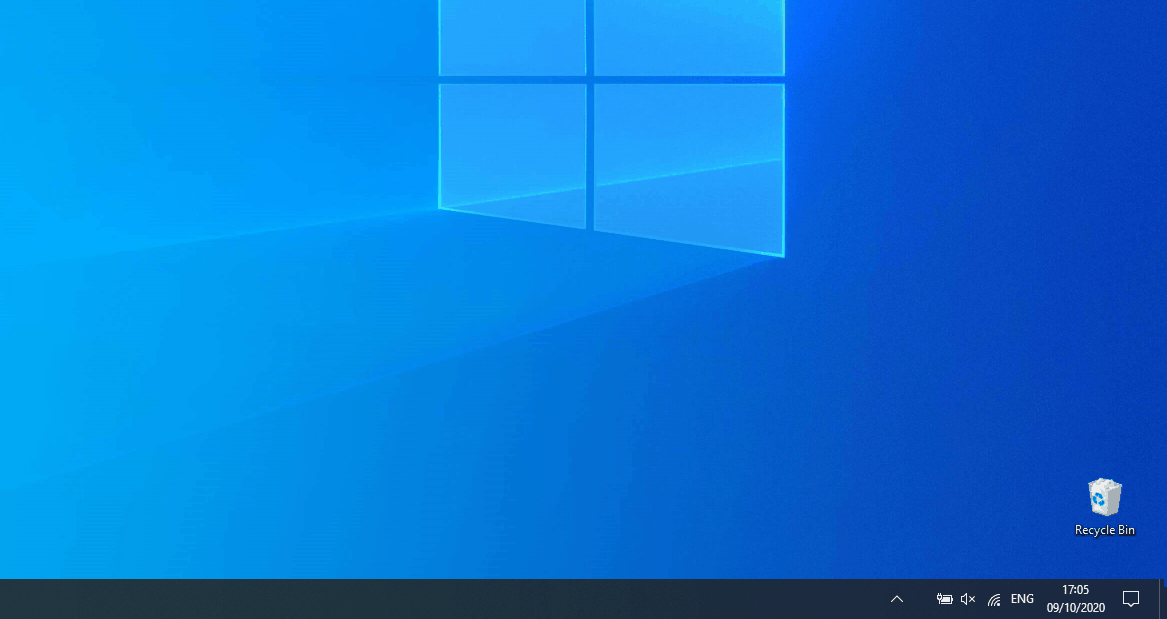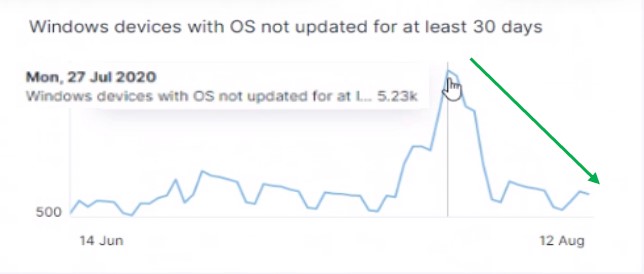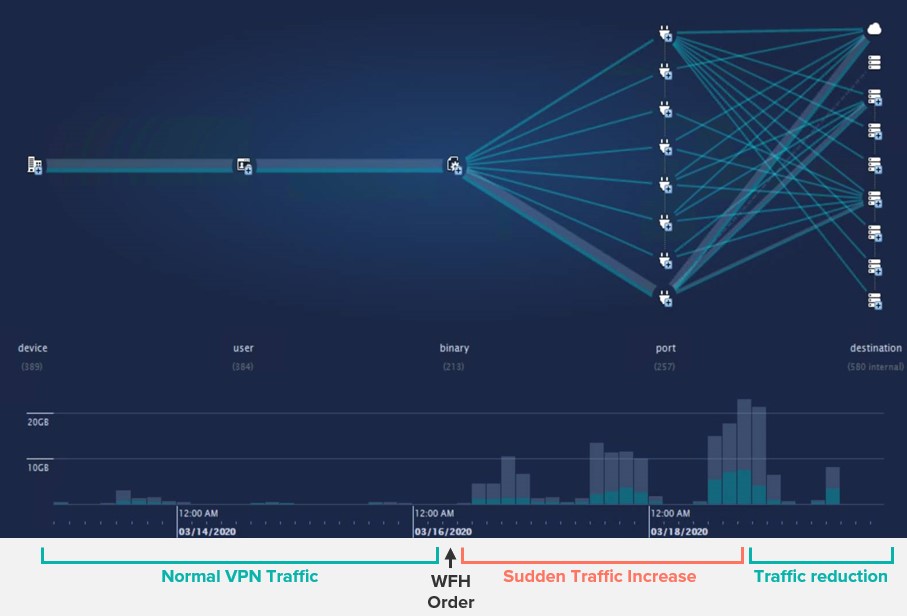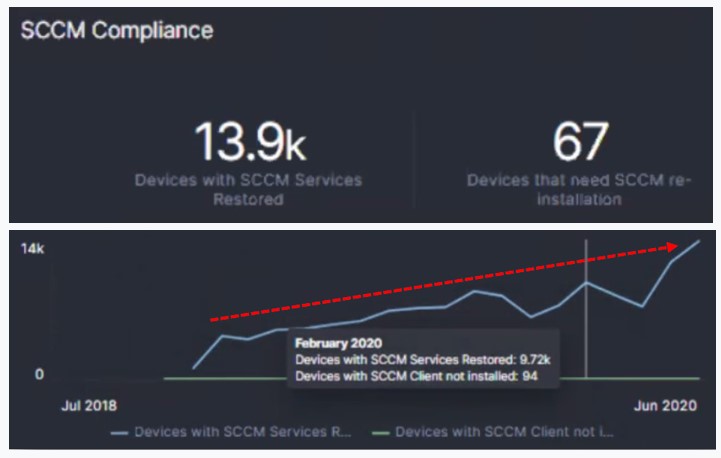How to Keep Your Digital Devices Current | Engagement & Automation
Pop quiz: An employee just submitted a ticket to IT about recurring application crashes. When IT finally gets back to them, what is the first thing they ask?
Answer: “When did you last update your device?”
If this rings true, there is a reason. Outdated devices and applications can quickly detract from digital employee experience and IT notoriously struggles to detect and resolve these issues at scale.
This is why when it comes to Digital Employee Experience management, proactivity is key.
Last week, we explored proactive employee self-help – empowering employees to resolve issues themselves through targeted engagement and automated remediation, at scale.
Now let’s explore one way IT can reduce incidents from occurring in the first place by ensuring that every device across their landscape stays current and compliant.
Addressing device vulnerability
An outdated or non-compliant device can open a flood gate of potential IT issues: poor performance, application instability, and security vulnerabilities—just to name a few. All severely impacting employees’ digital experiences.
This is a serious concern. Version dispersion issues are complex to detect—much less resolve—especially across a large device landscape. In most cases, support teams will only notice outdated devices and applications when an employee submits a ticket, ultimately forcing them to manually resolve these issues on a case-by-case basis, taking a significant toll on support teams’ productivity.
And in a world of SaaS and continuous update cycles, it is only getting worse.
Visibility. Action. Engagement.
We know a few things about device non-compliance: it causes a wave of performance issues; it’s hard to detect; and it can slow IT productivity. But what can you do to avoid devices from becoming increasingly vulnerable from non-compliance?
By keeping a constant eye on critical services versioning, deploying remote updates when necessary and keeping employees involved and aware. Our customers have proven this to be easier than you think by leveraging key Nexthink capabilities:
- Real-time, event-level visibility and analytics to monitor and detect outdated devices and application version dispersion
- Custom data retrieval and remote actions to diagnose root-causes and take instant action on employee devices at scale
- A hyper-targeted employee engagement channel to drive adoptions and awareness and enable self-help
These Nexthink capabilities enable IT teams to keep every device in their landscape up-to-date and compliant to significantly reduce ticket count, free-up IT productivity and improve Digital Employee Experience.
Below are some recent examples of how Nexthink customers achieved this.
1 – Reducing outdated Windows OS
This UK mining company wanted to ensure that a critical Windows 10 feature update had been successfully deployed. They saw that over 6,000 devices had not rebooted in more than 30 days preventing them from receiving the update, potentially leading to performance degradation and security risks.

To remediate this issue, the IT team quickly identified affected devices. They deployed an automated self-help campaign to briefly describe the issue to the employee and offer to restart their device. If a user accepted, a remote action would trigger a forced restart in two minutes.

Within a week, the company noticed a 77% reduction in outdated devices due to an increase in reboots, preventing potential performance or security incidents from ever occurring. Since employees were directly involved and educated about the reason for this restart, the campaign response rates were much higher than usual.
Manually reaching out to convince an employee to restart their device used to take the support team about 10 minutes per user. This automation saved over 1,000 hours of productivity.
2 – Disabling fast-start on Windows devices
Windows 10’s Fast Startup feature has benefits for individual users, but this northern European manufacturing company diagnosed the feature as the source of performance issues on certain devices. If this were to escalate, it could be devastating. They also discovered that the feature could prevent them from correctly reporting the devices’ last reboot date and time.
To remediate the issue proactively, the IT team scripted and deployed two custom remote actions using Nexthink Act. They first retrieved and reported that out of 3,100 Windows devices, around 500 had Fast Startup enabled. The second remote action disabled Fast Startup on each of those devices.

In a single troubleshooting session, the company improved Fast Startup compliance by ~98%, saving them hundreds of hours of productivity. And that is before considering future incidents that will not need to be resolved – they will simply never occur!
3 – Improving VPN performance during flexible working
This French multinational in the transport sector needed to effectively and securely transition to 100% remote working conditions due to COVID-19. This resulted in every employee connecting to the VPN, unaware that the company only required corporate VPN for accessing specific intranet applications, but not for all general services such as Office 365.
The result?
The company’s VPN system collapsed entirely, preventing thousands of users from accessing critical internal applications.

Instead of scripting a remote action to enforce proper VPN usage, the IT team decided to take a softer approach using Nexthink Engage. They quickly deployed a targeted awareness campaign to educate employees about unnecessary VPN usage for corporate resources not within the LAN. The highly personalized campaign delivered the message in seven different languages and only targeted those users who connected through the VPN.

Thanks to the campaign’s contextual and timely aspects, positive outcomes were clear in just a few hours. Over 23,500 employees received the campaign with a 90% response rate. The VPN load was quickly reduced and overall VPN connectivity and performance increased, reducing network usage by 75%. Employees could access their critical services once again, saving thousands of hours of both IT and employee productivity, as well as avoiding any related operational costs.
4 – Improving SCCM agent compliance
This Dutch food distributor noticed that a high percentage of SCCM agent software was out of date across the network. This worried them as SCCM agent compliance was critical to their software distribution and patching.
To further investigate, the IT team scripted and deployed a remote action that reported every device where SCCM services had stopped. Their next move was to deploy a second automated remote action over a one-month period that restarted and restored each devices’ SCCM services.

By leveraging these simple remote actions, IT improved the SCCM compliance of over 14,000 devices by restarting SCCM services, delivering the required patching rates and avoiding future potential tickets. To apply the same fix manually at that scale would have taken upwards of 2,000 hours of IT support’s productivity.
Success stories at scale
The stories above are just some of the many customer success stories we encounter daily. I wish I could share them all with you. For instance, how a Danish cargo company updated Bit-locker to corporate standards across 98.5% of devices with a single remote action, how a healthcare organization enabled a Chrome auto-update of 7,2500 devices to prevent over 500 tickets, or how this security agency encrypted 15,000 devices in just three days.
We’ll continue to share some great stories, so keep an eye out!
Staying current for a better employee experience
Ensuring proper usage and versioning is critical to prevent device and infrastructure vulnerability. But it does not have to be a complex process. You can deploy custom remote action to retrieve data or remediate issues at scale using Nexthink Act, send out personalized targeted campaigns to keep employees informed of current issues using Nexthink Engage, or a combination of both using automated self-help.
The choice is yours. But Nexthink has the data to make sure you make the right one.
Read more about Engagement and Automation success stories in previous blog posts:
Book a demo to find out how you can proactively manage employee experience by ensuring your devices stay current and up-to-date using Act and Engage from Nexthink.
12 Tips to Help IT Support a Distributed Workforce
Related posts:
- How IT Can Enable Smooth Digital Collaboration | Engagement and Automation
- How IT & Employees Can Work Better Together | Engagement & Automation
- Backing SCCM With Smart IT Experience Automations
- Powering the Digital Employee Experience for Remote Workers